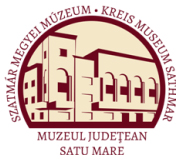Virag, Cristian: Cercetări Archeologice în Judeţul Satu Mare 2. (Satu Mare, 2015)
Tăsnad - Sere
anthropomorphic figurines. In Su XI-XIII were discovered features from the Neolithic (Pişcolt group, phase II), Bronze Age (Cehăluţ-Hajdirbagos culture), La Téne C (Kelts), Roman Age (c.2-4 AD), and a feature from the 6-7th centuries AD. From 2012 up to the present day the project ’’Between the Mountains and the Flood”, a collaboration between the Institute of Archaeology of UCL London (Ulrike Sommer) and the Satu Mare County Museum (Cristian Virág, Ciprian Astaloş) is going on. The Neolithisation of the area under consideration occurred at the level of the Starcevo-Criş culture, IIIB - IVA, through the penetration of the carriers of the Criş culture in the area of Carei - from Sălaj, through Barcău Valley, Ier Valley and perhaps through the Crasna corridor. Such Starcevo- Criş types of settlements are attested also in Sălacea, Tarcea, Voievozi, Văşad, Pişcolt, Berea, Urziceni. Their penetration is determined by the importance of obsidian in the economy of these communities as such cores were found at Căuaş and Urziceni. The Neolithic settlement from the area of the thermal swimming pool resort is the most important settlement of its kind in the county, and perhaps from northwestern Romania as it offered a rich archaeological material like pottery, stone artefacts, statues representing human figures or animals. The large number of pieces of obsidian (volcanic glass) from the Hungarian Tokay area that were discovered in this settlement point up to a strong, thriving community with an intense trading activity with the neighbouring communities. Also, the large fishing net clay weights (only in 2009 were found over 30 such pieces) indicate an intense practise of fishing in the community as fish was an important source of food. Among the most spectacular pieces discovered here, we must mention the female idols with their back in a prominent representation, a symbol of fertility and fecundity. Another spectacular piece is the pintadera. Its discovery is special as such pieces discovered in complete condition are very rare. It was most likely used for printing ornaments on clothes. The archaeological research at Tăşnad resulted in the discovery of numerous features like houses, storage or rubbish pits and clay extraction pits. Typologically, houses can be classified in surface houses, sunken houses and semi-sunken houses. The surface houses are: Cx 100/2009 (8,5x6 m) [a surface house with post holes well preserved on all the sides of the house, with three post holes in a row along the central axis of the house to support the roof ridge; on the southern side three additional post holes seem to have marked an annexe to the house], Cx 101/2009 (9x10 m) [a surface house with two rows of post holes; on the southern side was added to the house an annexe (7x2 m)], and Cx 110/2009 (7,5x7 m) [a surface house with two rows of post holes]. Semi-sunken houses are: Cx 103/2009 (4x1.5 m) [a partially uncovered semi-sunken house with an oven in the south-eastern corner] and Cx 2/2005 (5,10 x 7 m) [an oval shaped semi-sunken house, with 7 post holes and an oven dug in the wall of the feature; a large ceramic inventory, clay weights, burnt bones, ash and daub were discovered in this feature]. SATU MARE 7
